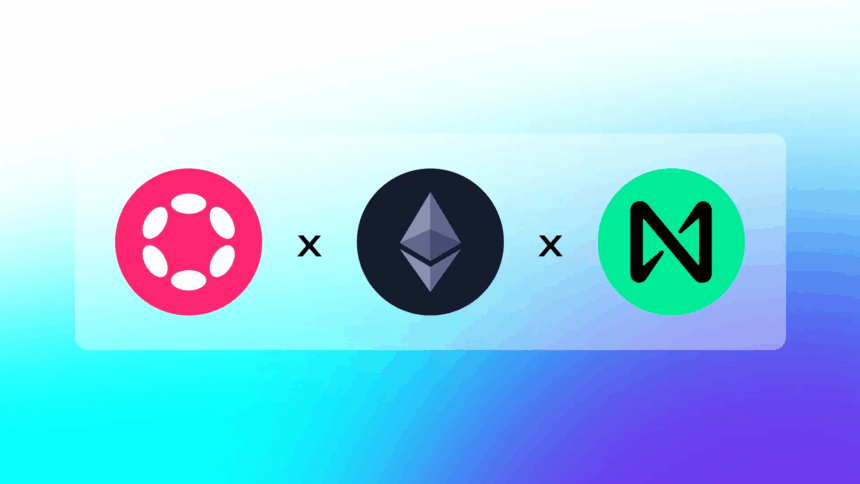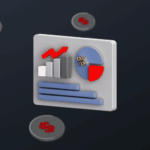I will explain Best Bridging Aggregators for Polkadot and Ethereum that focus on streamlining and securing lower-cost cross-chain transfers in this article.
- What is Bridging Aggregators for Polkadot And Ethereum?
- Why Use Bridging Aggregators for Polkadot And Ethereum
- Key Point & Best Bridging Aggregators for Polkadot And Ethereum List
- 1. LayerZero
- 2. Axelar Network
- 3. deBridge
- 4. Rango Exchange
- 5. Multichain
- 6. LI.FI
- 7. ChainHop
- 8. Router Protocol
- 9. Celer cBridge
- 10. Stargate Finance
- Risk & Considerations
- Conclusion
- FAQ
These aggregators accelerate transactions, lower costs, and consolidate numerous blockchains onto a single platform.
Knowing the leading aggregators enables users and developers to effortlessly transfer assets and tap into DeFi opportunities while improving interoperability between Polkadot and Ethereum.
What is Bridging Aggregators for Polkadot And Ethereum?
Bridging aggregators for Polkadot and Ethereum specialize in marrying the disparate chains’ data and tokens. Rather than using a single bridge which might have limitations and higher fees, bridging aggregators connect multiple bridges for users in one interface.
This allows users to find the fastest, cheapest and most secure route for their transactions. These aggregators provide easier interoperability between Polkadot and Ethereum.
It allows for smoother cross-chain asset transactions, decreased costs, and decreased risks associated with using individual bridges. They are vital to the growth of cross-chain decentralized finance (DeFi) opportunities across multiple blockchains.
Why Use Bridging Aggregators for Polkadot And Ethereum
Cost Effectiveness: Transaction costs are lowered since aggregators analyze various bridges and opt for the least expensive ones.
Speed: They provide faster cross-chain transfers by minimizing delays and using the most optimized pathways.
Safer Transactions: The use of restricted bridges reduces the likelihood of transactions going unexecuted or getting compromised.
Simplicity: They provide an intuitive cross-chain transfer solution that hides the complexity of the underlying mechanisms.
Extended Reach: More tokens can be easily transferred to and from Polkadot and Ethereum which enhances the user’s access to DeFi offerings.
Key Point & Best Bridging Aggregators for Polkadot And Ethereum List
| Bridging Aggregator | Key Features / Points |
|---|---|
| LayerZero | Ultra-lightweight cross-chain messaging, low-latency transfers, supports multiple blockchains. |
| Axelar Network | Decentralized network, secure cross-chain communication, wide asset compatibility. |
| deBridge | Multi-chain liquidity routing, supports both tokens and data transfer, high security standards. |
| Rango Exchange | Aggregates multiple bridges, optimized for lowest fees and fastest swaps, user-friendly interface. |
| Multichain | Supports a vast number of chains, efficient token swaps, strong community adoption. |
| LI.FI | Cross-chain aggregation protocol, bridges and DEX aggregation, gas-efficient transactions. |
| ChainHop | Focused on DeFi assets, optimized for speed, low slippage transfers. |
| Router Protocol | Multi-chain liquidity transfer, secure cross-chain bridges, DeFi ecosystem integration. |
| Celer cBridge | Fast, low-cost token transfers, supports multiple chains, high liquidity pools. |
| Stargate Finance | Native asset bridging, single transaction liquidity, cross-chain composability. |
1. LayerZero
LayerZero is highly regarded as an advanced bridging aggregator for Polkadot and Ethereum because of its cross-chain communication protocol of ultra-lightweight design.
Conventional bridges are far heavier and cumbersome as LayerZero facilitates direct messaging between various blockchains, which allows for instantaneous, low-cost, and much safer transfers.
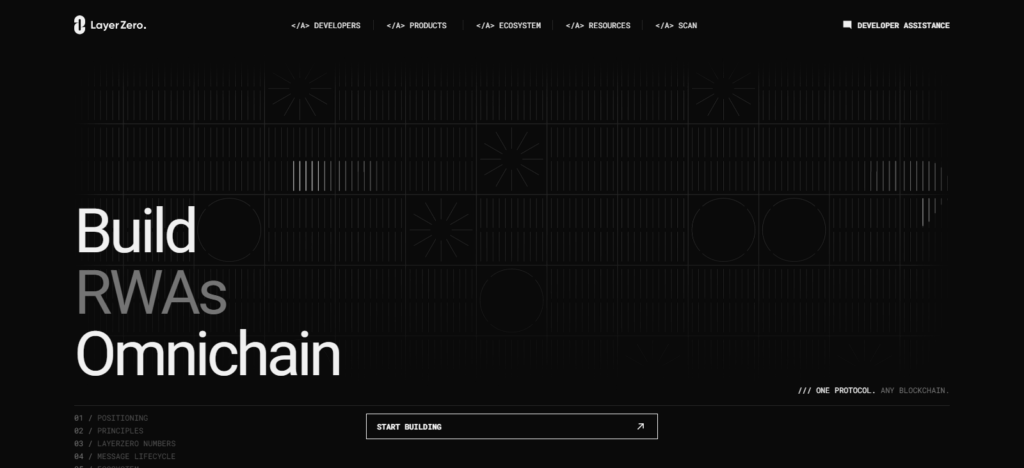
Users can efficiently transact across multiple chains with low latency cross-chain communication while high security is maintained.
Moreover, it most certainly is LayerZero’s versatile backbone that caters to the broad DeFi ecosystem and accommodates a diverse token set that enhances its Interoperability between Polkadot and Ethereum for developers and users.
In conjunction, these elements provide its overwhelming speed, reliability, and flexibility to stand out from the crowd.
| Feature | Details |
|---|---|
| Supported Chains | Polkadot, Ethereum, and multiple other blockchains |
| KYC Requirement | Minimal to none for basic token transfers |
| Transaction Speed | Ultra-fast, low-latency cross-chain transfers |
| Security | Uses ultra-lightweight, secure cross-chain messaging protocol |
| Supported Assets | Wide range of tokens and DeFi assets |
| Unique Point | Direct messaging between chains without heavy intermediaries, optimizing speed and cost |
| Use Case | Ideal for fast, secure, and cost-efficient transfers between Polkadot and Ethereum |
2. Axelar Network
The Axelar Network stands out as a top bridging aggregator for Polkadot and Ethereum because it provides a fully decentralized and secured cross-chain communication network.
Unlike traditional bridges, Axelar achieves interoperability by allowing smart contracts and applications to communicate and work across different blockchains without complicated intermediary systems.
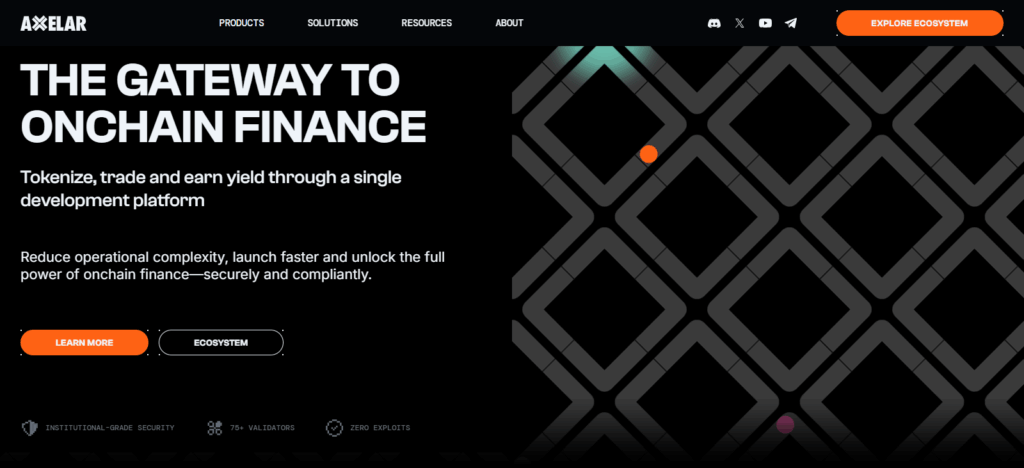
Its distinguishing characteristic is the universal gateway which provides enhanced security and reliability while simplifying asset transfers, message passing, and network interactions.
Having native support for various tokens coupled with a scalable infrastructure, Axelar Network provides low latency and economical cross-chain operations, making it a preferred option among users and developers seeking seamless integration with Polkadot and Ethereum.
| Feature | Details |
|---|---|
| Supported Chains | Polkadot, Ethereum, and multiple other blockchains |
| KYC Requirement | Minimal to none for basic token transfers |
| Transaction Speed | Fast and efficient cross-chain transfers |
| Security | Fully decentralized network with robust validator system |
| Supported Assets | Wide range of tokens, including DeFi assets |
| Unique Point | Universal gateway enabling smart contracts and apps to interact across chains seamlessly |
| Use Case | Ideal for secure, scalable, and reliable cross-chain transfers between Polkadot and Ethereum |
3. deBridge
deBridge is one of the most competitive bridging aggregators for Ethereum and Polkadot owing to its holistic, secure and flexible approach to multi-chain data and asset transfers.
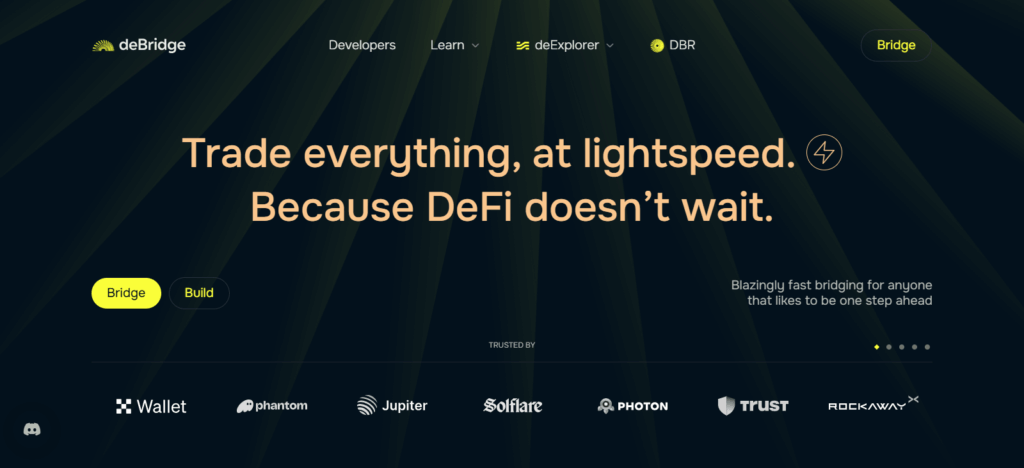
It sets itself apart from competitors for its unique ability to route transactions through several bridges, selecting the optimal route for efficiency in time and cost, all while minimizing the risk of fund exposure.
In addition to cross-chain smart contract calls, deBridge also facilitates the transfer of assets and with its intuitive functionality and wide cross-chain applicability, offers users secure, seamless, and effective access to ecosystems from Ethereum and Polkadot and to engage in increasingly sophisticated DeFi activities.
| Feature | Details |
|---|---|
| Supported Chains | Polkadot, Ethereum, and multiple other blockchains |
| KYC Requirement | Minimal to none for standard token transfers |
| Transaction Speed | Optimized routing ensures fast cross-chain transfers |
| Security | Strong security protocols with multi-bridge support |
| Supported Assets | Tokens and cross-chain smart contract interactions |
| Unique Point | Automatically selects the most efficient path across multiple bridges for speed and cost savings |
| Use Case | Ideal for secure, efficient, and flexible cross-chain asset transfers between Polkadot and Ethereum |
4. Rango Exchange
Rango Exchange is ranked among the leading bridging aggregators for Polkadot and Ethereum owing to its unique capability of consolidating multiple bridges onto a single platform.
Its distinct feature is optimizing every transaction in real-time and choosing the fastest route having the lowest fees to route the transaction thereby saving the user both time and money. Rango Exchange offers a large selection of tokens and works well with DApps, improving usability for cross-chain applications.
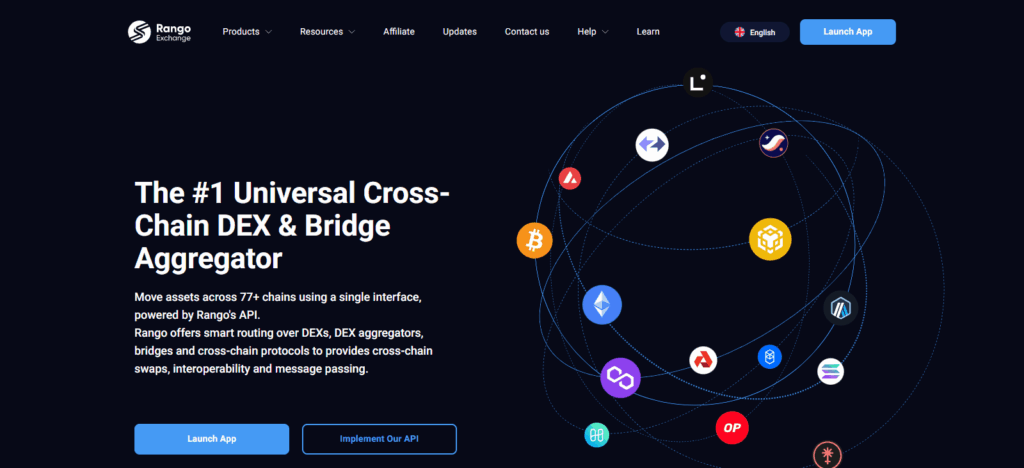
It is externally self-protecting and in a robust state which means that the system will only allow users to operate the system in a simplified manner, users will still be able to cross-chain system without any hassles.
This is where the inexperienced users come in, they will be able to operate the system without any harsh limitations. This efficiency, versatility, and user-oriented features with the greatest usability, are the reasons to why it is a leading choice.
| Feature | Details |
|---|---|
| Supported Chains | Polkadot, Ethereum, and multiple other blockchains |
| KYC Requirement | Minimal to none for basic token transfers |
| Transaction Speed | Fast transfers with optimized routing across multiple bridges |
| Security | Implements strong security protocols and trusted bridge selection |
| Supported Assets | Wide variety of tokens and DeFi assets |
| Unique Point | Automatically finds the fastest and lowest-fee route for cross-chain transactions |
| Use Case | Ideal for users seeking cost-efficient, secure, and user-friendly cross-chain transfers between Polkadot and Ethereum |
5. Multichain
Multichain takes pride in being one of the leading bridge aggregators for Polkadot & Ethereum for its unprecedented versatility and dependability for cross-chain token transfers.
One of the key factors of its popularity is the ability to support multiple Polkadot/Ethereum-bridged chains, and move assets between Polkadot, Ethereum, and countless other networks with ease.
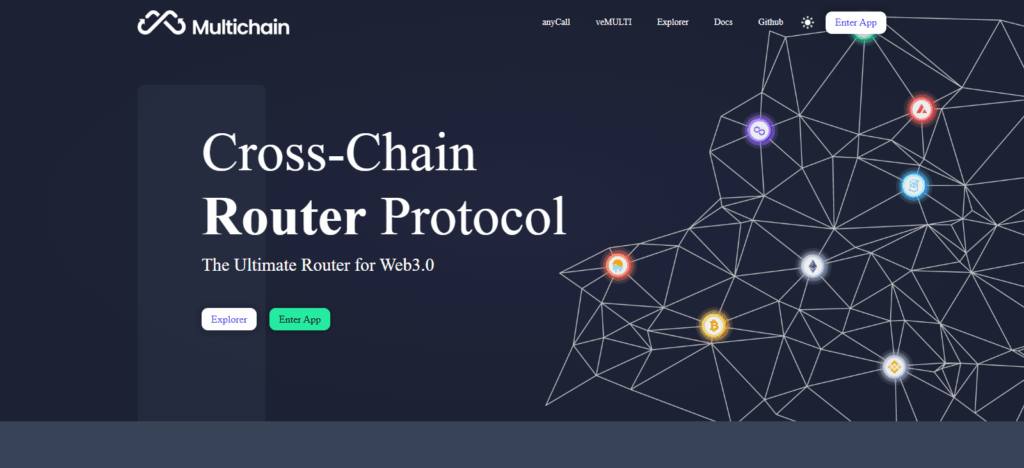
Multichain reduces transaction fees and processing times by automatically calculating the most optimal path for the transaction. The complete infrastructure is built for high liquidity and security, hence all transfers are smooth and secure.
Multichain’s cross-chain experience is unparalleled, with the perfect blend of seamless chain coverage, optimal performance, and robust security. Users and developers both experience the same unmatched performance.
| Feature | Details |
|---|---|
| Supported Chains | Polkadot, Ethereum, and many other blockchains |
| KYC Requirement | Minimal to none for standard token transfers |
| Transaction Speed | Efficient routing ensures fast cross-chain transfers |
| Security | High-security standards with reliable bridge connections |
| Supported Assets | Wide range of tokens and DeFi assets |
| Unique Point | Supports a vast number of chains, enabling seamless asset movement across ecosystems |
| Use Case | Ideal for users seeking broad chain compatibility, high liquidity, and cost-efficient transfers between Polkadot and Ethereum |
6. LI.FI
LI.FI has bridged the gap with the best bridging aggregation for Polkadot and Ethereum. Its platform’s seamless integration of cross-chain bridging and DEX aggregation is unrivaled.
Its unique benefit is the ability to optimize every transfer by determining the fastest, cheapest, and reliable access point from bridges and DEX route.
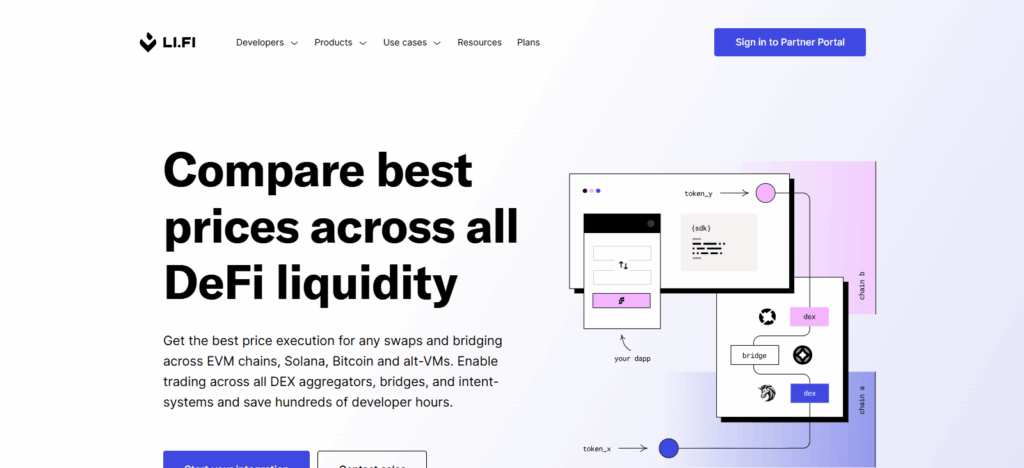
LI.FI has an extensive supported tokens and blockchains ecosystem which allows users to transfer assets effortlessly as a cross-chain to DEX transactions without the complex cross-chain bridging tool needed.
Its smart contract cross-chain capabilities allows operators and users the seamless integration of DEX tools for automated cross-chain functionality. LI.FI’s cross-chain wiith speed and cost to DEX tools integration makes it a premium choice for cross-chain users.
| Feature | Details |
|---|---|
| Supported Chains | Polkadot, Ethereum, and multiple other blockchains |
| KYC Requirement | Minimal to none for standard token transfers |
| Transaction Speed | Fast cross-chain transfers with optimized routing |
| Security | Strong security protocols with verified bridge connections |
| Supported Assets | Wide range of tokens, including DeFi assets |
| Unique Point | Combines bridging and DEX aggregation to find the most efficient and cost-effective route |
| Use Case | Ideal for users seeking fast, flexible, and low-cost cross-chain transfers between Polkadot and Ethereum |
7. ChainHop
ChainHop is one of the leading bridging aggregators for Polkadot and Ethereum, and this is largely due to the focus on quick, low-slippage cross-chain transfers, especially DeFi assets.
ChainHop’s secret sauce rests on its ability to route transactions through dozens of bridges to maximize speed and minimize fees without compromising security.
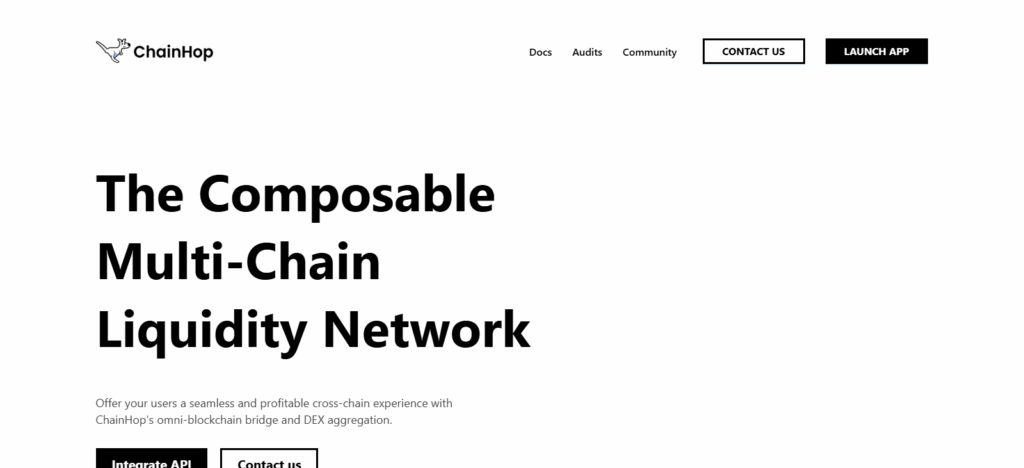
ChainHop holds a cross-chain architecture and a complex cross-chain operations capabilities, including smart contract interactions.
Transaction optimization and cross-chain simplification also holds for developers and everyday users. ChainHop’s outstanding reliability, user-centric design, and proven performance solidify its standing as an aggregator of choice.
| Feature | Details |
|---|---|
| Supported Chains | Polkadot, Ethereum, and multiple other blockchains |
| KYC Requirement | Minimal to none for standard token transfers |
| Transaction Speed | Fast transfers with low slippage and optimized routing |
| Security | High-security protocols for safe cross-chain operations |
| Supported Assets | DeFi tokens and other widely-used assets |
| Unique Point | Specializes in efficient, low-slippage transfers optimized for DeFi assets |
| Use Case | Ideal for users and developers seeking fast, secure, and cost-effective cross-chain transfers between Polkadot and Ethereum |
8. Router Protocol
Router Protocol is regarded as one of the best bridging aggregators for Polkadot and Ethereum thanks to its seamless multi-chain liquidity transfer and real-time cross-chain interoperability.
Its unique edge is in the secure transfer of assets and programmable smart contracts which enables almost seamless interaction of dApps across several blockchains.
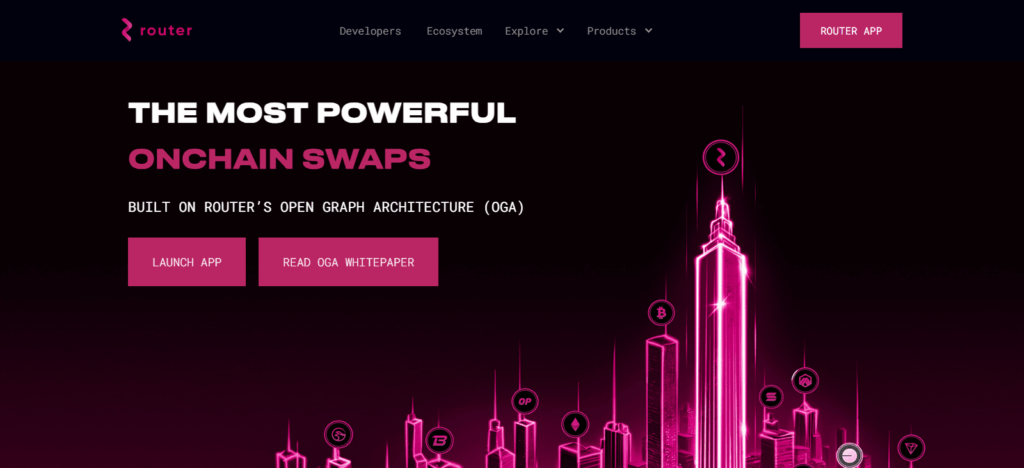
Router Protocol uses smart identification and advanced algorithms to offer the best price routing which minimizes transaction costs and times.
It offers support for a diverse set of tokens and DeFi capabilities which increases its utility to developers and users alike.
Router Protocol has advanced cross-chain capabilities which are secured, high-performing, and integrated across multiple chains, providing seamless and dependable cross-chain plumbing at scale.
| Feature | Details |
|---|---|
| Supported Chains | Polkadot, Ethereum, and multiple other blockchains |
| KYC Requirement | Minimal to none for standard token transfers |
| Transaction Speed | Fast cross-chain transfers with optimized routing |
| Security | Strong security with multi-bridge verification |
| Supported Assets | Wide range of tokens, including DeFi assets |
| Unique Point | Combines secure asset transfers with smart contract compatibility for cross-chain DeFi operations |
| Use Case | Ideal for developers and users seeking reliable, scalable, and secure cross-chain transfers between Polkadot and Ethereum |
9. Celer cBridge
Celer is an adept bridging an aggregator for both Polkadot and Ethereum with its focus on speed, costs, and liquidity for cross-chain transfers. Celer is particularly good with the near-instant token transfers between blockchains with extremely low fees.
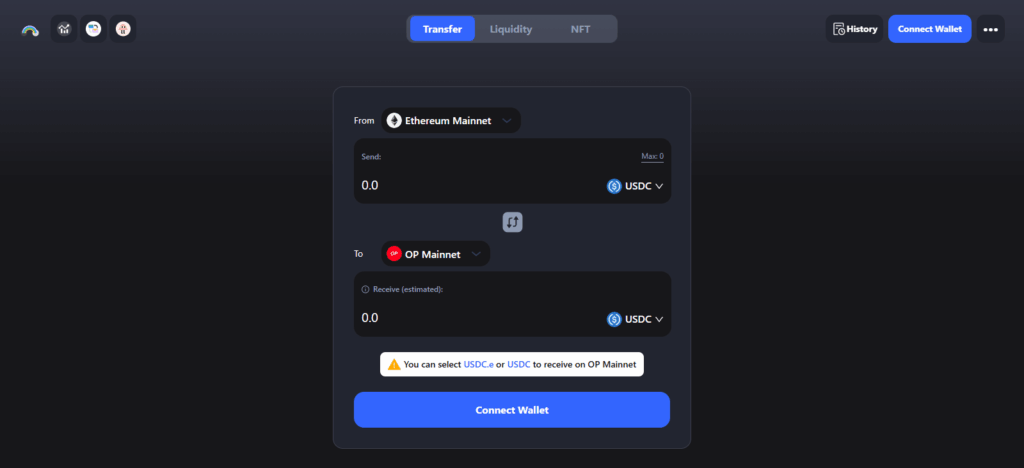
This makes the system very versatile for payments on both ends of the spectrum, whether small of large. This versatile system will allow for smooth integrations with dApps and DeFi and NFT cross-chain transactions.
With security and reliable routing across many bridges, Celer cBridge focuses on safe, quick, and effortless transfers between Polkadot, Ethereum, and other networks.
| Feature | Details |
|---|---|
| Supported Chains | Polkadot, Ethereum, and multiple other blockchains |
| KYC Requirement | Minimal to none for standard token transfers |
| Transaction Speed | Near-instant cross-chain transfers with optimized routing |
| Security | High-security protocols with reliable bridge connections |
| Supported Assets | Wide range of tokens and DeFi assets |
| Unique Point | Prioritizes speed and cost-efficiency with high liquidity across chains |
| Use Case | Ideal for users and developers seeking fast, secure, and low-cost cross-chain transfers between Polkadot and Ethereum |
10. Stargate Finance
Stargate Finance is the top-performing bridging aggregator for Polygon and Ethereum because of its focus on cross-chain liquidity and native asset transfer.
Users can move tokens in a single transaction without multiple steps or conversions, thus lowering costs and complexity.
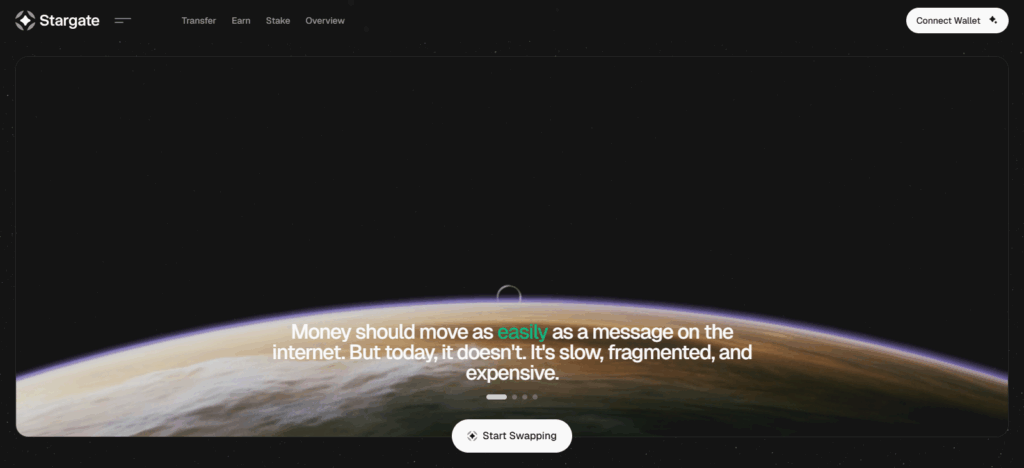
With internal dex composability, Stargate Finance allows decentralized applications to plug and play for cross-chain DeFi activities.
Clients can expect instant settlement due to high-security measures, proficient transfer routing, and liquidity pools. Withdrawals are seamless and secure. The combination of liquidity and low slippage makes a cross-chain user’s experience effortless.
These features of Stargate Finance makes it a premier Stargate Finance is a premier Stargate Finance is a premier choice for cross-chain users.
| Feature | Details |
|---|---|
| Supported Chains | Polkadot, Ethereum, and multiple other blockchains |
| KYC Requirement | Minimal to none for standard token transfers |
| Transaction Speed | Fast transfers with single-transaction liquidity routing |
| Security | Strong security standards with native asset bridging |
| Supported Assets | Wide range of tokens and DeFi assets |
| Unique Point | Enables native asset transfers in a single transaction, reducing complexity and cost |
| Use Case | Ideal for users seeking efficient, secure, and simple cross-chain transfers between Polkadot and Ethereum |
Risk & Considerations
Smart Contract Exploits: Bridges use smart contracts that can contain errors that result in the loss of funds.
Liquidity Risks: Bridges with little liquidity can result in slippage or failed transactions.
Network Congestion: Congestion on either chain can delay transactions and increase fees.
Cross-Chain Breakages: Breakdowns in communication between chains can result in lost or frozen tokens.
Centralization Risks: The use of a small set of validators on some bridges increases the reliance on trust.
Lack of Certainty: The regulation and legal frameworks for chain- to-chain operations are still evolving and can affect operations.
Conclusion
To sum up, the bridging aggregators considered best for Polkadot and Ethereum, for instance, LayerZero, Axelar Network, deBridge, Rango Exchange, Multichain, LI.FI, ChainHop, Router Protocol, Celer cBridge, and Stargate Finance, serve an important purpose in facilitating cross-chain transfers.
They improve ease of access, lower the fees, and offer additional rapid and secure options for both the developers and end-users. Each of them gives different specialized benefits, including but not limited to, ultra-lightweight messaging, decentralized secured routing, optimized routing with high liquidity, and more.
Users are able to bridge assets and gain access to wider features and opportunities in DeFi and blockchain if the appropriate aggregator based on the user’s criteria of speed, cost, and security is chosen.
FAQ
What are bridging aggregators for Polkadot and Ethereum?
Bridging aggregators are platforms that connect multiple blockchain bridges in a single interface, allowing users to transfer tokens and data seamlessly between Polkadot and Ethereum while optimizing for speed, cost, and security.
Why should I use a bridging aggregator instead of a single bridge?
Aggregators find the most efficient route across multiple bridges, reducing fees, transaction time, and the risk of failed transfers compared to using a single bridge.
Are bridging aggregators safe to use?
While most aggregators implement strong security measures, risks like smart contract vulnerabilities, network congestion, and low liquidity still exist. Always use well-audited platforms.
Can I transfer any token using these aggregators?
Most aggregators support a wide range of tokens, but compatibility depends on the specific platform and the blockchain networks involved.
Do I need technical knowledge to use bridging aggregators?
No, most platforms like Rango Exchange or LI.FI offer user-friendly interfaces for beginners, though understanding cross-chain concepts helps optimize usage.



